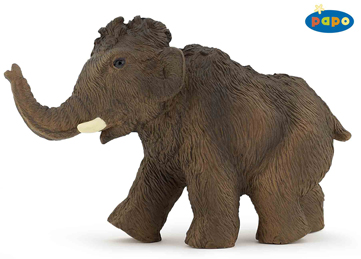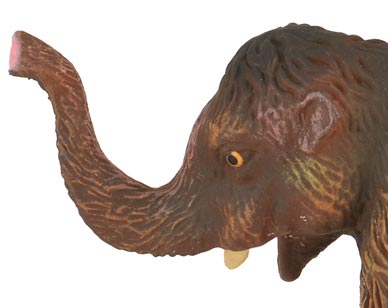Lyuba Tour Dates Announced – Baby Mammoth to Visit Natural History Museum
Baby Mammoth Exhibition to visit Museums – Schedule Announced
Lyuba, the beautifully preserved baby mammoth that drowned in a muddy pool approximately 40,000 years ago, is the star attraction on a new Woolly Mammoth exhibition that will be making its debut at the prestigious Field Museum in Chicago (USA) before embarking on a world tour.
This almost perfectly preserved frozen carcase of a one-month-old female Mammoth calf was discovered by a reindeer herder in the remote Yamal-Nenets region of Siberia in May 2007. An ear and part of the tail were missing, perhaps as a result of the body being scavenged by wolves before it was frozen, or perhaps as a result of the corpse partially thawing out before the herder found it. The baby Mammoth was named Lyuba, the name of the herder’s wife.
Baby Mammoth
It had been studied in Japan and several casts of the animal have been made. This calf is extremely important as it represents a healthy animal. Previous finds of baby Mammoths such as Dima were corpses of animals that were malnourished or ill when they died. Poor Lyuba got stuck in a muddy pool and drowned, so perfectly preserved was this specimen that scientists were able to learn a lot about Mammoths and their young.
To read an article about Lyuba’s discovery: Baby Mammoth Fossil Found.
Lyuba will be the star attraction of a travelling exhibit on Woolly Mammoths, there are plans to have this exhibit tour a number of museums over the next four years or so. Her first stop will be the Field Museum in Chicago (USA) where she will be on display from March 5th 2010 until September 6th 2010. Not all the museums may be able to have the actual fossil of Lyuba, however, a replica model is available to help visitors to that particular leg of the tour, appreciate how well preserved this baby Mammoth is.
A Model of a Baby Mammoth
The juvenile Woolly Mammoth (above), is from the Papo range of prehistoric animal models and figures.
To view this range: Papo Prehistoric Animal Models and Figures.
Commenting on the Lyuba exhibition plans, Daniel Fisher, a professor of geological sciences at the University of Michigan who is part of the international team of researchers studying the animal stated:
“There’s a visceral awe that takes hold of you in looking at a specimen like Lyuba, and the exhibition as a whole demonstrates how close we can come to knowing what these animals were like”.
As Lyuba was in good condition and healthy before her unfortunate accident, she has already taught researchers a lot about Mammoths and their young. For example, traces of her mother’s milk were found in her stomach and a store of fat at the back of the skull may have helped the young animal keep warm. This hump helped provide energy to the body and keep the animal warm in a cold climate. This supports the theory that baby Mammoths were born in the spring, allowing them enough time to grow and put on fat reserves to help them through their first winter.
Professor Fisher reported:
“We had no idea from preserved skeletons and preserved carcasses that young mammoths had a discrete structure on the back of the head of brown fat cells”.
The discovery of Lyuba has fuelled speculation about the possibility of being able to clone a Mammoth from preserved DNA. Professor Fisher commentated that this particular fossil could yield DNA but “no one is on the threshold of cloning at this point”.
Mammoth on Tour
After the Field Museum exhibit closes, Lyuba and the rest of the display items will be embarking on a 10 city tour, the final stop is scheduled for the London Natural History Museum in 2014. Dates have yet to be finalised, but as we write this blog entry we understand dates from May to September 2014 have been reserved for the Natural History Museum in London. The Natural History Museum’s exhibition team have discussed the possibility of the exhibit called “Mammoths and Mastodons: Titans of the Ice Age” coming to London with their counterparts from Chicago.
Since the discovery of Lyuba, we have helped on the making of a new model Woolly Mammoth calf, this new model is not to scale but works well with the 1:20 scale model series from manufacturers such as Schleich and Carnegie Safari.
The calf has been sculpted to show a much younger animal than the Schleich baby Woolly Mammoth calf.
Baby Woolly Mammoth model, prehistoric animal figures and dinosaurs: CollectA Age of Dinosaurs Prehistoric Life Models.



